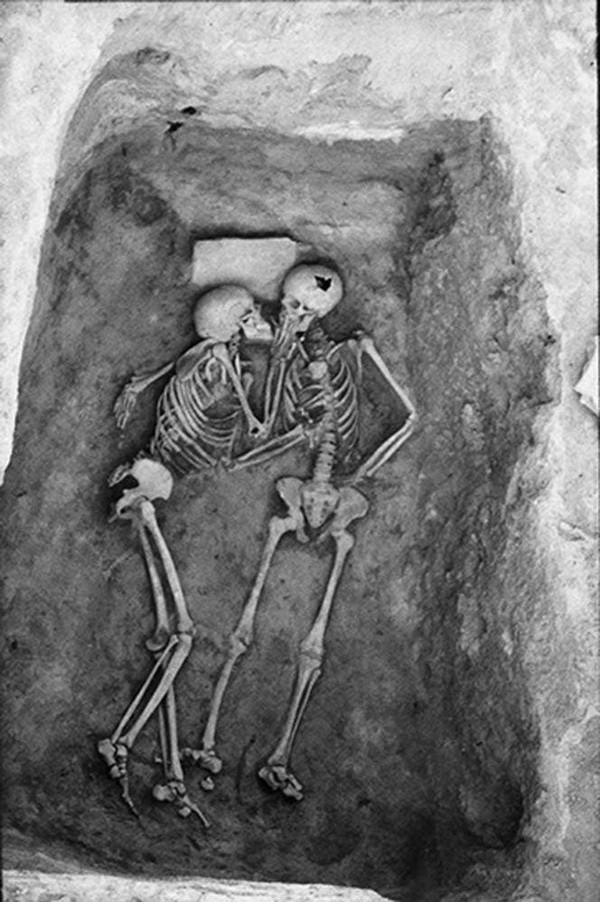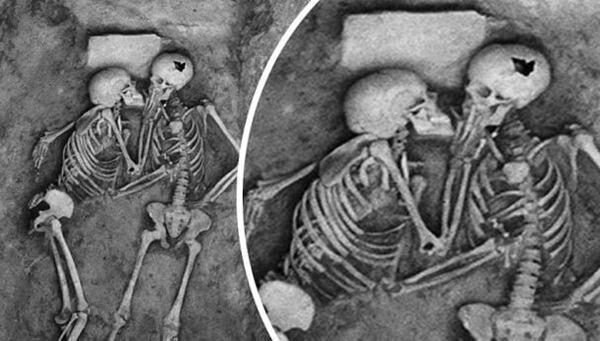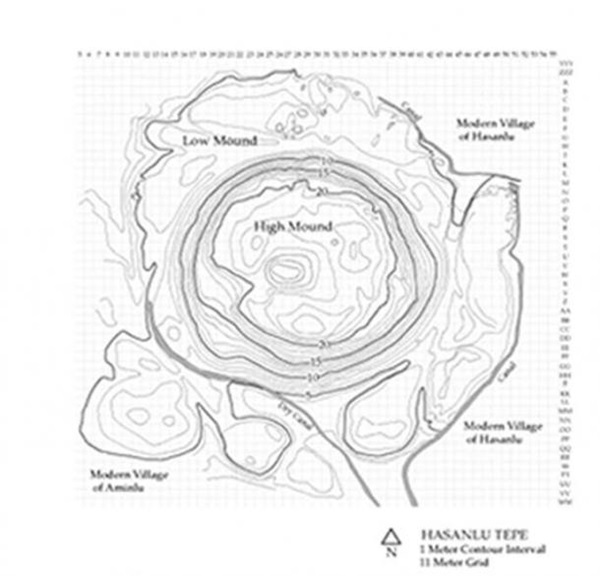Although there is still much debate, the posture of these two skeletons before death surprised scientists.
In 1972, at the Teppe Hasanlu archaeological excavation site, Solduz valley, West Azerbaijan province, Iran, archaeologists suddenly discovered two sets of remains believed to be of a man and woman in a kissing position. together.
This area is conjectured to have been burned down in an attack by two competing factions, with people from both sides dying in the fire that spread quite quickly and unexpectedly. These two skeletons were found in a box made of plaster, perhaps a hiding place for those participating in the fighting. They got in there and were suffocated by the smoke.
 It was reported that both were men, which could indicate a same-𝑠e𝑥 relationship or a family connection. However, according to the book “Culture and social institutions in ancient Iran” by the author group Muhammad A. Dandamaev, Vladimir G. Lukonin, Philip L. Kohl, published by Cambridge University, these two skeletons are of a male and female couple and the woman on the left.
It was reported that both were men, which could indicate a same-𝑠e𝑥 relationship or a family connection. However, according to the book “Culture and social institutions in ancient Iran” by the author group Muhammad A. Dandamaev, Vladimir G. Lukonin, Philip L. Kohl, published by Cambridge University, these two skeletons are of a male and female couple and the woman on the left.
Advertisement: 7:30
Through the photo, one can see a puncture in the male skeleton’s skull, but archaeologists confirmed that it was due to the excavation process, not damage before death.
Teppe Hasanlu, located in northwestern Iran is a famous archaeological site of an ancient city and was excavated over 10 seasons from 1956 to 1974 by research teams from the University of Pennsylvania Museums and Metropolitan Museum of New York City.
Over the years, they have made many interesting discoveries in Hasanlu. Including 2 skeletons found in 1972. The Pennsylvania Museum published the photo and called it “The Lovers” with the description:
“The Lovers”, taken in 1972 in Hasanlu
Hasanlu is an archaeological excavation site in the Solduz valley, West Azerbaijan province, Iran. These skeletons were found in an empty barrel with nothing else around. The only thing left besides the two skeletons is a stone slab under the left skeleton’s head.”

 Outline map of Hasanlu Tepe, located south of Lake Urmia – today’s West Azerbaijan province of Iran.
Outline map of Hasanlu Tepe, located south of Lake Urmia – today’s West Azerbaijan province of Iran.
When discovered, the two skeletons were found in a barrel and there were no other items around. The only thing that caught their attention further was a stone slab under the head of the skeleton on the left. Many sources confirm that this skeleton is up to 6,000 years old. In fact, archaeologists who studied the skeleton say it is only 2,800 years old. The research team from the University of Pennsylvania also believes that these two people died around 800 BC, which is about 2813 years ago.
Although there is still much debate, the posture of these two skeletons before death surprised scientists. This shows that, thousands of years ago, feelings like vowing to live and die together were real. Then 2,800 years later, future descendants found traces of an admirable eternal love…






